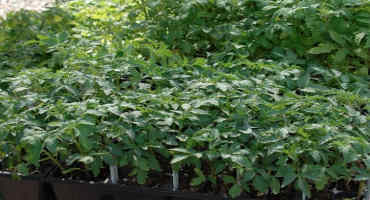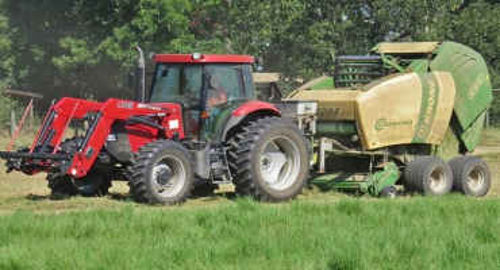August is a transitional time in the vegetable garden. While cool-season planting begins in earnest next month, some of the more heat-tolerant cool-season vegetables, such as the cole crops, can be planted into the garden now. And because our first frosts generally don’t arrive until late November or early December, we can also plant warm-season vegetables like tomatoes and cucumbers for fall production. Visit area nurseries to find out what vegetable transplants and seeds they have available to plant.

Tomato transplants for a fall crop can be found in nurseries in August
It is important to prepare beds properly before planting. Clear the site of all weeds or finished vegetable plants. Turn the soil with a shovel, fork or tiller to a depth of at least 8 inches and spread the tilled soil with a 2-to-4-inch layer of organic matter — leaves, grass clippings, aged manure or compost. This helps maintain a high level of organic matter in the soil, which encourages a strong, healthy root system, improves drainage, retains moisture, provides nutrients and promotes vigorous plant growth.
Fertilizer can be sprinkled on top of the organic matter. Apply general-purpose fertilizer following package directions for rates. Gardeners should consider having their soil tested through their parish LSU AgCenter extension office to learn more about the fertility of their soil and what fertilizer to use. A soil test will also tell you if you need to add lime to the soil.

Pepper plants often survive the heat of summer and continue to produce as weather cools in fall
Mix the organic matter and fertilizer thoroughly into the soil. Turn the soil by digging with a shovel, garden fork or tiller until the added materials are evenly distributed. If you are not gardening in raised beds, form the soil into raised rows about 8 inches high and 2 to 4 feet wide, with narrow walkways between them. If you are gardening in containers, use a quality potting mix, and fertilize with balanced soluble or slow-release fertilizers used according to label directions.
Insects and diseases have had all summer to build up their populations, and insects such as whiteflies, stink bugs, aphids and caterpillars are commonly seen this time of year. Because insect and disease pressures are often greater in late summer and early fall than in spring, watch plants carefully for problems and use appropriate control measures promptly when needed.
Now is the time to plant tomato and bell pepper transplants for fall production. If your pepper plants from the spring are still in reasonably good shape, they will often produce an excellent fall crop once the weather begins to cool down (this also goes for eggplants). Keep them well fertilized and protected from insects and diseases.
Spring-planted tomato plants rarely survive the summer in decent shape, and new transplants are generally used for the fall crop. Tomato cultivars that produce well in fall include Florida 91, Spitfire, Solar Set, Heatwave II, Phoenix, Sunleaper, Sunmaster, Solar Fire or Talladega. Plant several varieties, and see which you like best.
Fall snap beans often produce better than those planted in spring. This is because as the fall snap beans come into production, temperatures begin to cool down, while in spring, the weather gets increasingly hotter as the beans produce their crop. They are one of the easiest and most reliable vegetables and are especially appropriate for children’s gardens. Wait until late August in north Louisiana or early September in south Louisiana to plant so they will come into bloom after the weather has begun to turn cooler, and choose bush types. You may want to plant bush lima beans.
Click here to see more...